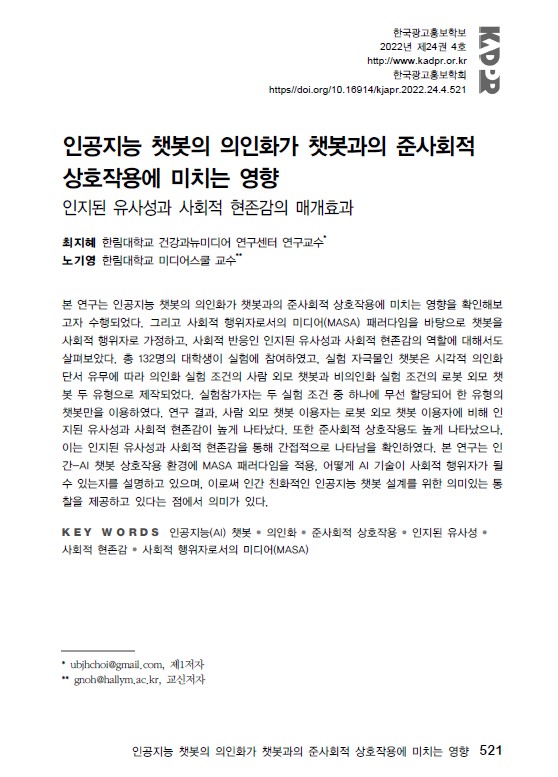인공지능 챗봇의 의인화가 챗봇과의 준사회적 상호작용에 미치는 영향: 인지된 유사성과 사회적 현존감의 매개효과
페이지 정보
- 최고관리자
- 23-05-31
- 2,379 views
- 2022
본문

This study was conducted to examine the effect of AI chatbot’s anthropomorphic cue on parasocial interaction with AI chatbot. Based on the media are social actors(MASA) paradigm, chatbots were assumed to be social actors, and their social responses(i.e., perceived homophily, social presence) were also examined. A total of 132 college students participated in an experiment. Chatbots as experimental stimuli were created in two types: chatbot with human-like appearance for the anthropomorphic experimental condition and chatbot with robot-like appearance for the non-anthropomorphic experimental condition. The participants were randomly assigned to one of the two conditions. This study found that people who used the human-like chatbot reported greater levels of perceived homophily and social presence than those who used the robot-like chatbot. In addition, the level of parasocial interaction was also found to be greater, but the effect occurs indirectly through perceived homophily and social presence. The findings of this study may provide the explanation of how AI technology can be a social actor by empirically testing the MASA in the human-AI robot interaction setting, and may also provide useful insights for the design of human-friendly AI chatbot.
Citation
최지혜, 노기영. (2022). 인공지능 챗봇의 의인화가 챗봇과의 준사회적 상호작용에 미치는 영향: 인지된 유사성과 사회적 현존감의 매개효과. 한국광고홍보학보, 24(4), 521-549.